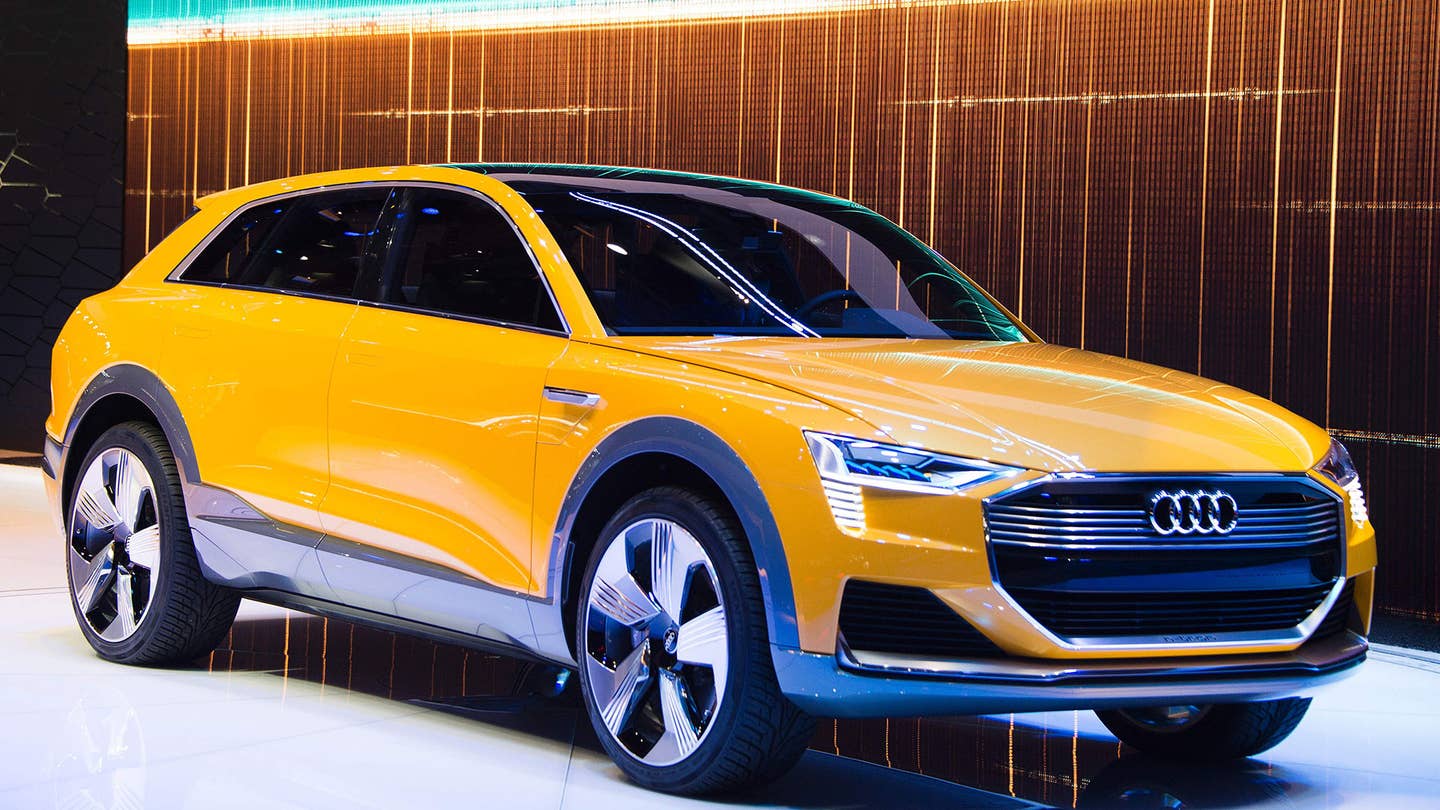Audi H-tron Quattro Is Detroit’s Most Forward-thinking Car
Fuel-cell SUV makes an unlikely dream machine.

Once wedded to diesels, Audi now believes that fully electric cars will make up one of every four sales in America by 2025. With its $38,000, plug-in hybrid A3 Sportback E-tron already on sale, Audi will begin backing up that promise with an all-electric E-tron Quattro, headed to American showrooms in 2018.
Yet despite that bullish position, Audi—along with the likes of Honda, Toyota and Hyundai—continue to peer out further into the future, to cars powered by hydrogen.
Below its Michigan-maize paint and handsome scythe-blade wheels, the Audi H-tron Quattro concept packs six kilograms of compressed hydrogen in a trio of multi-layered tanks. That fuel-cell system supplies 148 horsepower, with a lithium-ion battery adding a 134-hp burst, for a total of 406 pound-feet of torque. The Quattro can surge to 60 mph in less than seven seconds, and a solar roof soaks up enough rays to add 620 miles of bonus driving range per year. At least that’s what Audi says.
Siegfried Pint, Audi’s chief of electric powertrains, acknowledged hydrogen’s stiff headwinds in terms of fueling infrastructure and technology costs—including the need for up to 120 grams of precious-metal platinum for the fuel-cell catalyst, at a current cost of some $35 a gram. But the H Tron’s upside includes a four-minute fueling time and roughly 375 miles of driving range, both shaming battery-electric vehicles.
“If you take long trips and want a zero-emissions vehicle, a fuel cell is what you want to buy,” Pint said.
Audi’s Virtual Cockpit display is aboard, but in a new, curving, thin-screen treatment. Exterior mirrors are replaced with more aerodynamic, wide-angle cameras, whose captured images are relayed in real time onto the interior door sills.
Pint’s career includes one year working on the BMW i8 and six-years with the BMW/Williams Formula 1 team, in the glory days of naturally aspirated engines that spun to 19,500 rpm. Pint realizes that car geeks might be more envious of developing F1 engines than battery-powered models, but the switch made perfect sense to him.
“Thinking of what I can do with my life, I could be one of 10,000 powertrain engineers in Germany, or the first one to do electric powertrains,” Pint says.
